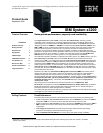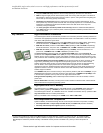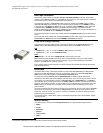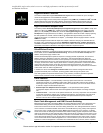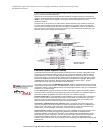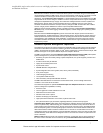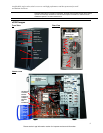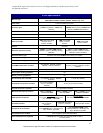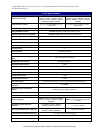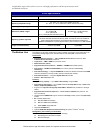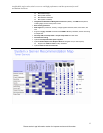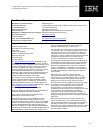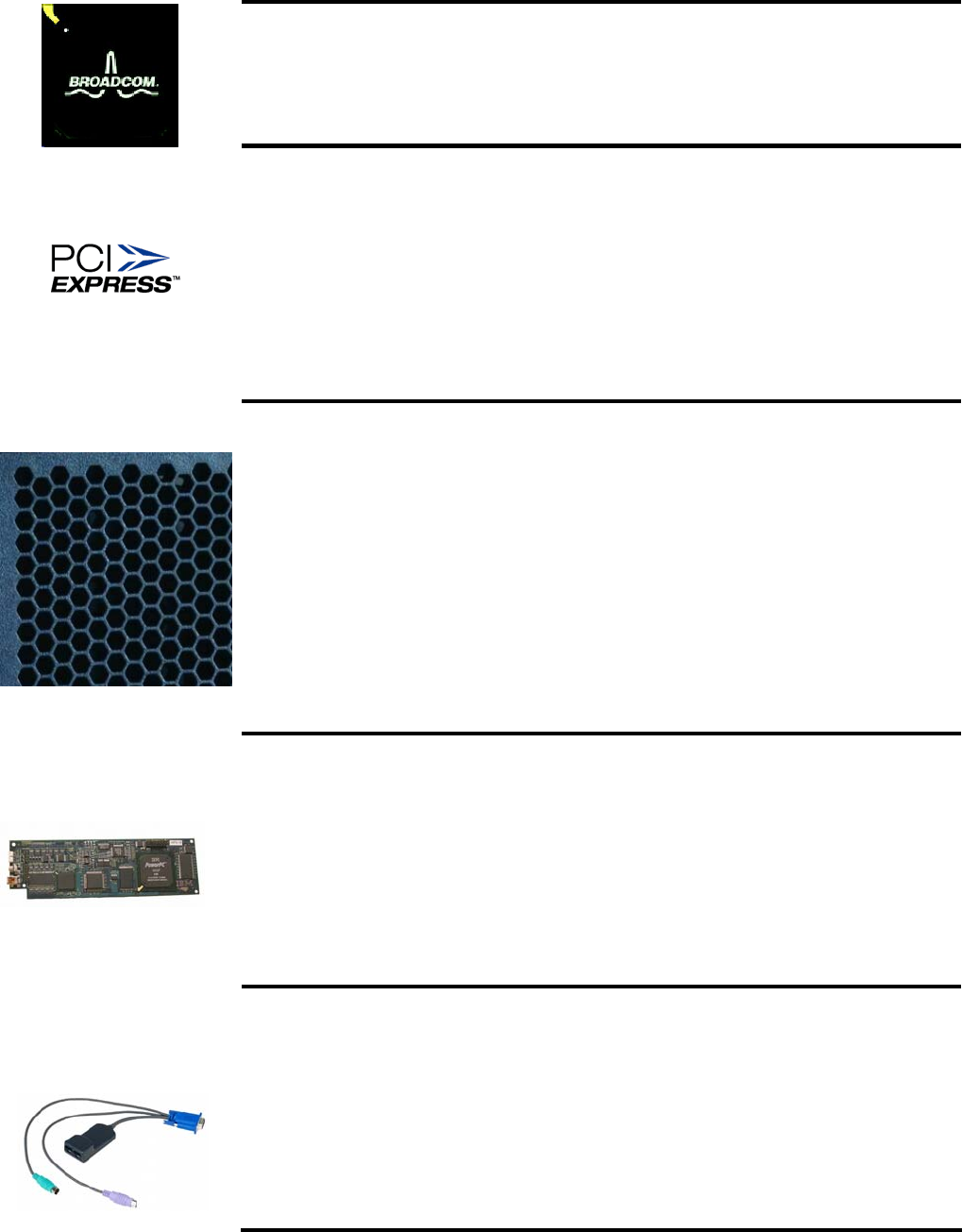
An affordable single-socket, dual-core server with high performance and data protection for small
and medium businesses
Please see the Legal Information section for important notices and information.
5
Gigabit Ethernet Controller
The x3200 includes one integrated Broadcom 5721 Gigabit Ethernet controller for up to 10X higher
maximum throughput than a 10/100 Ethernet controller.
It also supports highly secure remote power management using IPMI 1.5, plus Wake on LAN
®
and PXE
(Preboot Execution Environment) flash interface. Optional PCI adapters offering failover and load
balancing between adapters are available for added throughput and increased system availability.
High-Performance Adapter Slots
The x3200 provides two PCI-E (PCI Express) full-length/full-height adapter slots (Slots 1 and 2). One
(Slot 2) is a x8 (“by 8”) 4GBps slot, capable of supporting x1/x4/x8 adapters at full speed. The other
(Slot 1) is a x1 (500MBps) slot. Slots 3, 4, and 5 are full-length/full-height legacy 33MHz PCI slots.
PCI-Express is a high-performance, low-latency, next-generation serial I/O bus that is rapidly replacing
the older parallel PCI and PCI-X buses. A x8 PCI-E adapter offers approximately four times the
maximum throughput of a 133MHz PCI-X adapter
5
. (A x1 adapter offers throughput similar to a 64-bit
66MHz PCI-X slot.)
The RAID daughtercard and Remote Supervisor Adapter II SlimLine card plug into dedicated slots on
the planar. This, coupled with the fact that the SAS/SATA, Gigabit Ethernet, systems management
and video controllers are integrated onto the system board, means that all PCI/PCI-E adapter slots are
all available, which offers customers a wide degree of latitude in expansion options.
Ultra-Efficient Cooling
Strategically located fans, combined with efficient airflow paths, provide highly effective system cooling
for the x3200, known as Calibrated Vectored Cooling. The server includes three hot-swap fans. In
addition, each power supply contains a fan.
The fans automatically adjust speeds in response to changing thermal requirements, from minimum
RPMs to maximum, depending on the zone, redundancy, and internal temperatures. When the
temperature inside the server increases, the fans speed up to maintain the proper ambient temperature.
When the temperature returns to a normal operating level, the fans return to their default speed. Why
not simply run the fans at 100% capacity all the time? For several good reasons: to reduce the ambient
noise, reduce the wear-and-tear on the fans and reduce the server power draw. The reduction in
ambient noise and power draw may be relatively minor for a single server, but put dozens or hundreds in
a data center and it can make a big difference!
In addition, the server uses hexagonal ventilation holes in the chassis. Hexagonal holes can be
grouped more densely than round holes, providing greater airflow through the system cover.
This cooling scheme is important because newer, more powerful, processors generate a significant
amount of heat, and heat must be controlled for the system to function properly.
Other Features
• Seven USB 2.0 ports — Provides flexibility to add high-speed external devices. The USB 2.0
specification supports up to 480Mbps transfer rates. (Note: Not all USB 2.0 devices are capable of
achieving this rate.) Two ports are provided on the front of the server, four are on the back, and one
is internal to support a USB-interface tape drive.
• Remote Supervisor Adapter II SlimLine support — This optional full-function systems
management adapter adds local and remote management functions without consuming an adapter
slot.
• Toolless chassis — The cover can be opened without tools, and many components can be installed
or removed and replaced without tools, including the optical drive, hot-swap HDDs, PCI and PCI-E
adapters, as well as the integrated RAID controller and optional Remote Supervisor Adapter II
SlimLine. This can save a servicer significant time.
Rack Cable Management and KVM Console Switching
IBM Advanced Connectivity Technology (ACT) is an optional feature that offers many advantages over
standard KVM cabling across the entire System x and xSeries product line. So now customers can
interconnect all of their servers with one smart cabling architecture. ACT cabling eliminates the need for
one-to-one direct connections between each server and a KVM switch by using a daisy-chain approach.
Here’s how it works: A KVM Conversion Option (KCO) plugs into the back of any System x or xSeries
server and converts the KVM signal to standard CAT5 network cabling signals. Inexpensive CAT5 cable
(with RJ-45 connectors on each end) then daisy-chains the first server to a KCO in the next server in the
rack. Because CAT5 cabling is industry-standard, customers can assemble cables to fit on-site. There is
a short KCO dongle (250mm/10”) for servers without a cable management arm and a longer (1.5m/5 ft)
one for servers that do have cable management arms. The KCO allows up to 16 servers to be chained
together for common
management. If customers have x330/x335 servers in the rack, there is a special



